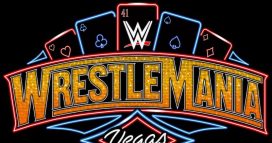Phillies
Baseballs, And Careers, Are Disappearing Right Before Our Eyes
So you’re at work one day and your boss sidles over with a suggestion he swears will make you more productive and, therefore, more valuable to the company. As he talks through it everything sounds great – you’ll become markedly better at what you do, and your company’s bottom line will increase as a result. There’s only one drawback, he finally admits. You’ll only be productive like this for a few years, after which you’ll become utterly useless. Well, maybe two: the moment you show the first signs of losing value, at approximately the same time you think you’re finally able to command a salary commensurate with the startling level of productivity you’ve now achieved, you’ll be terminated and replaced with a younger employee who will do what you no longer can – and on the cheap — until he can’t and then he’ll be replaced, too. And so on and so forth. What would you say to that?
You probably wouldn’t rush to hop on board that train, that’s for sure. It’s a sucker’s deal, no doubt, with only one true beneficiary – the company. Everyone else winds up abandoned on the side of the road, smoking shells of their former selves. Yet that’s the deal MLB players are taking right now, in the “three true outcomes” era. And it’s not clear they have any alternative but to continue to be complicit in the torching of their own careers.
In an era where velocity isn’t merely the most important thing but often the only thing that matters, pitchers are lining up to do whatever it takes to add a few miles to their fastballs and more spin on their breaking balls, even though studies have found strong correlations between the exercises required to achieve these outcomes and significant arm strain and injury.
Hitters, as well, have altered their approaches at the plate, at the urging of the technical specialists their clubs are now hiring by the boatload, armed with data and machinery showing that it’s lift that matters, not consistent contact. In fact, all of this shows, with pitchers throwing so hard, consistent contact isn’t even a reasonably achievable goal anymore; there will be more swinging and missing than ever given the velo and spin craze so on those increasingly rare occasions when you do make contact, you better make it count.
In this environment it’s the reflexes that matter most – reflexes that begin to diminish slowly but steadily in one’s mid-to-late-twenties. A young hitter is worth more than an older one for this reason alone. And by old, we’re talking late ‘20’s; a 30-year-old hitter is increasingly being looked upon as some sort of baseball codger. Once the reflexes start to go, even a smidgen, the data suggests that it’s time to move on to the next guy. 50 may be the new 30 at Sandals Montego Bay but in baseball 29 is rapidly becoming the new 40.
None of this is in the best interests of the players on the field. They’re being chewed up and spit out of the grinder that is Major League Baseball at alarming speed. And more and more frequently, before they can truly cash in. The collection of free agents on the outside looking in every March keeps growing, and with bigger names. To be sure, none of them are destitute. But many of them thought they were heading toward life-altering paydays and then watched everything being snatched away right when they were on the cusp of them.
Of course, they’re pissed about this. Yet, at the same time, they’re adjusting their swings and increasing the torque on their arms nevertheless, somehow not appreciating the connection between their embrace of these new baseball norms and their own hasty and unceremonious exits from the game a few years down the road because of them.
Worse, even if they do, there’s no clear path toward putting a stop to all of it and protecting their careers. Players have wanted to throw harder since before the days of Cy Young, and hit the ball further ever since Babe Ruth arrived in Boston in 1914. These are not new ideas. Yet, while baseball history is littered with cornpone advice on how to throw this pitch or that one, and how to hit like Ted Williams, George Brett, or Tony Gwynn, the game’s surprising saving grace has always been that such advice was worthless. Ted Williams had no idea how he did what he did, despite what he claimed. For all his bragging about understanding the mechanics of hitting, he still managed four Washington Senators/Texas Rangers clubs that annually ranked among the most abysmal offensive teams in the American League from 1969-72.
Today, however, the advice from the data experts littered throughout baseball isn’t cornpone. These guys know what they’re talking about. They’re achieving real results. Pitchers are throwing harder, and with more spin than ever; hitters are hitting more, and harder, home runs. It’s difficult to imagine any player ignoring the technology and advice that’s out there right now. He’d be a fool to do so. The thing is, he’s also a fool to buy in to it.
Right now the players are trapped. Caught between their desire to perform at the highest possible level and guarding against their own obsolescence. There’s no way out for them. They’re stuck.
Other than that, the game’s in great shape. Happy 4th.





